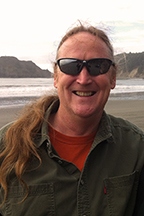Fish Kills and Vanishing Razor Clams Alarm the Quinault
Fishermen and tribal elders join in WSG’s investigation of devastating coastal hypoxia
By Lauren Drakopulos, WSG Science Communications Fellow
By Lauren Drakopulos, WSG Science Communications Fellow
In the last few years, tribal elders have observed highly localized fish kills caused by hypoxia (low oxygen levels). Hypoxia events have occurred with alarming frequency all along the Pacific Northwest coastline. They are associated with upwelling, the movement of cold dense water from the ocean floor toward the surface and coastline. Upwelling brings important nutrients, nourishing algal plankton and boosting biological productivity along this coast. But it’s a double-edged sword — when those algae die, sink and decompose, they cause even more oxygen depletion in the already dense, salty, oxygen-poor lower depths.
Even more concerning, the fish kills coincided with low razor-clam densities on tribal beaches, leading the Quinault to wonder if there might be a relationship between the two. Ervin “Joe” Schumacker, a Marine Resources Scientist in the

Joe Schumacker, Marine Resources Scientist with the Quinault Indian Nation.
Quinault Department of Fisheries, is working in partnership with tribal elders, managers and the local fishing community on a Washington Sea Grant-funded project to better understand the relationship between hypoxia and razor clam health.
In addition to their cultural value, razor clams are a significant food and economic resource for the Quinault. They are an excellent protein source and provide work through both commercial digs and value-added production at the Quinault Pride Seafood Plant in Taholah. Further, one of the beaches where the clams are dug is the only beach in Washington that is solely managed by a tribal entity. Other tribal beaches are co-managed with the state.
The range of species killed by the hypoxia reflects a local geography that compounds the impact. “Point Grenville Beach was inundated with dead fish of all kinds,” explains Schumacker. “There were species galore, bottom-dwelling demersal fishes, crabs, pelagic fishes. Those pelagic fish, in this case anchovy, are so mobile they can generally escape these events, but they had gotten trapped in a natural cove and couldn’t escape the hypoxia.” Other marine fishes have been observed swimming up the Quinault River, trying to get to better oxygenated waters.
Understanding the hypoxia and, perhaps, protecting the clams holds personal significance for Schumacker, who grew up making family trips to the West Coast to dig razor clams and went on to graduate from the University of Washington’s School of Aquatic and Fishery and Sciences. Schumacker has since spent 17 years working with the Quinault community. Beyond the goals of improving water quality and razor clam health, he sees this project as a chance to build connections between fishermen and other tribal members and the wider research community. “The project is really trying to do some relationship work,” he notes. “Fishing boats [which deployed data-collection instruments] were key to the collaborative process. Tribal fisherman really wanted to help.”
Getting the blessing of tribal leaders was also key to the project’s success. The history of the Quinault people and their deep knowledge of the area are key research components. Elders, leaders and managers have shared their traditional ecological knowledge, which is critical to understanding how the ecosystem functioned in the past and how razor clam populations have been affected. The elders did not recall ever seeing anything like the fish kills and other changes. “Nothing sparks in my mind about it,” one elder told Schumacker.
Research is still underway, although a poor crabbing season (likely caused by natural cycles but potentially exacerbated by hypoxia) kept many partner boats from fishing this year, providing fewer opportunities to collect data. Still, Schumacker is optimistic about the research — the first Sea Grant-funded project on Quinault territory — dedicated to an issue of surpassing local importance.